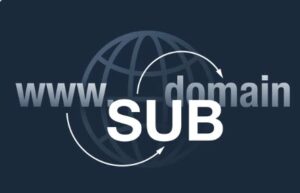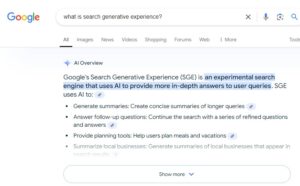Google frequently updates its search algorithms, which can have a major impact on your local website’s visibility and rankings. Whether these updates lead to higher traffic or sudden declines, the key is not to panic. Instead, it’s important to take a systematic approach to analyze the situation and determine if an update has truly affected your site.
In this blog post, we’ll walk you through how to diagnose if your website has been impacted by a Google algorithm update, using Google Search Console and other SEO tools. Additionally, we’ll dive into technical SEO issues like 404 errors, chain redirects, and slow page speeds, and we’ll explain how to resolve them. By the end of this post, you’ll have a solid understanding of how to handle potential SEO disruptions and ensure your website stays competitive.
Why You Shouldn’t Panic When Traffic Drops
When you notice a sudden decline in your website’s traffic, it’s natural to feel concerned, but the most important thing is to stay calm. Google algorithm updates often cause temporary fluctuations in search rankings. Sometimes, these changes are short-lived, and your site may bounce back as the update settles.
It’s also worth noting that not all traffic drops are caused by algorithm updates. Seasonality, technical issues, or changes in user behavior can also play a role. By taking a systematic, data-driven approach, you can identify the root cause of the decline and address any issues.
Understanding Google Search Console Reports
Google Search Console (GSC) is one of the most powerful tools you have for diagnosing website issues after a Google algorithm update. It provides detailed insights into how your website is performing in search results and highlights any issues that may be preventing your site from ranking well.
Here are the key GSC reports you should focus on:
1. Performance Report: Tracking Traffic Changes
The Performance Report in Google Search Console allows you to track your website’s traffic over time, including clicks, impressions, click-through rate (CTR), and average position for different queries. If you suspect your site has been affected by an update, this is the first place to look.
How to Use the Performance Report:
- Track Traffic Trends: Compare your organic traffic over time, focusing on specific date ranges around the suspected update. Sharp declines in clicks or impressions could indicate that your site has lost visibility.
- Year-over-Year Comparisons: Instead of focusing on month-to-month fluctuations, compare traffic from the same period in the previous year. This smooths out seasonal variations and helps identify more significant, long-term trends.
- Focus on Local Traffic: If you run a local business, filter your traffic by geographic location to see if traffic from your target region has been affected.
2. Coverage Report: Spotting Indexing Issues
The Coverage Report in GSC helps you identify which of your pages have been indexed by Google and highlights any errors or warnings. One common issue that arises after algorithm updates is when Google stops indexing certain pages, especially if it deems them low-quality or irrelevant.
Key Statuses to Look For:
- Crawled – currently not indexed: This status means that Google has crawled the page but decided not to index it, often due to low content quality or perceived lack of value.
- Discovered – currently not indexed: This indicates that Google is aware of the URL but hasn’t crawled it yet, possibly due to a limited crawl budget or low priority.
- Soft 404 Errors: These occur when a page exists but provides insufficient content, prompting Google to treat it as a 404 error. Addressing these errors can help restore the page’s visibility.
By resolving these indexing issues (either by improving the content, merging pages, or redirecting), you can help Google better understand the value of your site and potentially restore any lost rankings.
3. Manual Actions Report: Checking for Penalties
If your site experiences a significant traffic drop, it’s important to check the Manual Actions Report to see if your site has been penalized by Google. Manual actions are applied when Google detects violations of its Webmaster Guidelines, such as spammy content or unnatural links.
How to Use It:
- Navigate to Manual Actions: In Google Search Console, go to Security & Manual Actions → Manual Actions. If there is a penalty, it will be listed here.
- Resolve Issues: Google will provide details about the penalty, and it’s crucial to follow their recommendations for resolving the issue. Once the problem is fixed, submit a Reconsideration Request to have the manual action lifted.
4. URL Inspection Tool: Reviewing Individual Pages
The URL Inspection Tool lets you analyze specific pages on your website to see how Google crawls and indexes them. If certain pages have seen a drop in traffic, this tool allows you to drill down and identify any underlying issues.
How to Use It:
- Inspect Specific URLs: Enter the URL of a page you suspect has been affected. GSC will show you whether the page is indexed, and if not, it will provide details on why it’s excluded.
- Fix Indexing Problems: If the page isn’t indexed due to technical issues or blocked resources, take the necessary steps to resolve these problems and request a fresh crawl from Google.
Use SEO Tools to Deepen Your Diagnosis
Beyond Google Search Console, third-party SEO tools like SEMrush, Ahrefs, and Moz can help you dive deeper into your website’s performance and uncover additional insights. Here’s how each tool can assist in diagnosing traffic drops after an algorithm update:
- SEMrush: The Site Audit tool can scan your website for technical SEO issues (such as broken links or slow page speeds). The Position Tracking feature can help you monitor your site’s visibility for key local search queries.
- Ahrefs: Use Site Explorer to view trends in organic traffic and identify which pages are losing visibility. Ahrefs’ backlink analysis can also show if a drop in traffic might be related to lost or devalued backlinks.
- Moz: Moz’s Keyword Explorer allows you to monitor how your local keywords are performing, while the Rank Tracker can provide insights into your site’s overall search performance.
What to Do If Your Local Website Has Been Impacted
If you’ve determined that your local website has been affected by a Google algorithm update, there are several steps you can take to recover. Here’s a comprehensive action plan:
1. Conduct a Full Technical SEO Audit
Start by addressing any technical issues that could be preventing Google from properly crawling, indexing, or ranking your site. Common technical SEO issues include 404 errors, chain redirects, and slow page speeds, all of which can negatively impact your rankings after an update.
How to Fix Technical SEO Issues:
- 404 Errors: Use Screaming Frog to identify pages returning 404 errors. Set up 301 redirects to point users and search engines to the correct page, ensuring that SEO value is preserved.
- Chain Redirects: Redirect chains (where URL A redirects to URL B, which redirects to URL C) can slow down page loading times and confuse search engines. Consolidate these chains by setting up a single redirect from URL A to URL C.
- Slow Page Load Speeds: Use Google PageSpeed Insights to identify slow-loading pages and implement recommendations such as image compression, caching, and code minification. If needed, consider upgrading your hosting provider for better performance.
Improving your site’s technical health not only helps search engines crawl and index your pages but also enhances user experience, which is a key factor in many of Google’s updates.
2. Enhance Your Content Quality
After addressing technical issues, focus on content quality. Google algorithm updates often reward websites with high-quality, valuable, and relevant content, particularly for local businesses.
How to Improve Content Quality:
- Create Location-Specific Pages: If you serve multiple areas, create dedicated pages for each city or neighborhood you operate in. Include unique content tailored to the specific needs of that location.
- Address Thin Content: Thin pages that lack depth or useful information can hurt your site’s rankings. Expand these pages with more detail, examples, and media (such as images and videos) to make them more valuable to users.
- Write Local Blog Posts: Develop content that highlights your connection to the local community, such as posts about local events, industry news, or collaborations with nearby businesses.
3. Optimize Your Google Business Profile (GBP)
Your Google Business Profile (GBP) is critical for local search visibility, especially after updates that focus on local SEO factors. A fully optimized and active GBP can help your business rank higher in the Local Pack and on Google Maps.
How to Strengthen Your Google Business Profile:
- Accurate Information: Ensure that your business name, address, phone number, and hours of operation are up to date and consistent across all platforms.
- Add Photos and Videos: High-quality images and videos of your business, services, or team can help engage users and improve your profile’s performance in local search.
- Encourage Reviews: Positive reviews play a huge role in local SEO rankings. Encourage satisfied customers to leave reviews, and respond to all feedback to show engagement.
4. Focus on User Experience
Google’s algorithm updates increasingly prioritize user experience (UX). A site that loads quickly, is easy to navigate, and provides a seamless experience across all devices is more likely to rank well in the long term.
How to Improve User Experience:
- Improve Navigation: Ensure your website’s menu and layout are easy to use. Users should be able to find what they’re looking for within a few clicks.
- Optimize for Mobile: With Google’s mobile-first indexing, your site’s mobile experience is more important than ever. Ensure your site is responsive and that all elements (including forms and navigation) work well on mobile devices.
- Enhance Readability: Break up long text blocks with headers, bullet points, and images to make your content more scannable and accessible.
Conclusion: Stay Calm and Use Data to Guide Your Response
When a Google algorithm update impacts your local website, it’s important to approach the situation calmly and methodically. By using tools like Google Search Console, SEMrush, and Ahrefs, you can identify whether your traffic has been affected by indexing issues, manual penalties, or technical SEO problems. Focus on long-term traffic trends, such as year-over-year comparisons, rather than short-term fluctuations in keyword rankings.







